Surf’s up
Arugam Bay, Sri Lanka – 26 Aug ’06
(but only discovered on the net October, 2007)
Text: Pablo Chaterji
Photos: Pablo Chaterji
Hitting the waves in Sri Lanka

Apologies for the somewhat morbid beginning, but of all the methods of shuffling off the mortal coil, drowning is the one I fear most. There’s something about being caught under water that inevitably scares the daylights out of me. Since one Mr Murphy revels in just such situations, perhaps I shouldn’t have been surprised to find myself deep inside the ocean, under a wave of fairly gigantic proportions. I could feel the blood pounding in my forehead as I struggled furiously to come to the surface. My eyes were stinging from the salt water, my lungs were at bursting point and I could feel water starting to enter my nose. I was in a blind panic, to put it mildly, and the fact that I had a surfboard attached via a cord to my ankle wasn’t helping matters any. The overall sensation was that of being thrown inside a giant washing machine in Turbo Spin mode, and the more I struggled, the more air I burned up.
 Just then, in the midst of all the panic and chaos, I suddenly realised I was being stupid. Sure, the water was deep, but not that deep; I could see the ocean floor a couple of feet beneath me. Also, although the wave that had knocked me flat and churned me underwater had been huge, it had spent itself and was now not much more than a large swell making its way to shore. I stopped fighting the water and allowed myself to float to the surface, treading water and gratefully sucking in lungfulls of air. Man, this surfing business wasn’t as easy at it looked.
Just then, in the midst of all the panic and chaos, I suddenly realised I was being stupid. Sure, the water was deep, but not that deep; I could see the ocean floor a couple of feet beneath me. Also, although the wave that had knocked me flat and churned me underwater had been huge, it had spent itself and was now not much more than a large swell making its way to shore. I stopped fighting the water and allowed myself to float to the surface, treading water and gratefully sucking in lungfulls of air. Man, this surfing business wasn’t as easy at it looked.
Nevertheless, I was in Arugam Bay, on Sri Lanka’s eastern coast and among the world’s top ten surfing sites. I hadn’t come all the way here just to give up after being battered by one wave, so I gathered up my (rented) board and headed back to shore in order to try again. Before coming here, I had done a ‘surfing for idiots’ Google search and had carefully memorised some of the how-to lessons I had found. Naturally, as is usually the case with such foolishness, the chasm between rote learning and practical application had turned out to be considerable. Still, the absolute basics were valid, so I began to go over them mentally as I walked into the water.’You saarf faarst time?’ I turned around to find that the query had come from a spectacularly fit Japanese girl in a bikini the size of a postage stamp. Board in hand, she looked like she had been surfing for years. ‘Is it that obvious?’ I asked. She giggled in the way only Japanese girls do. ‘I see you fall. Also, you holding saarfboard wrong way.’ I produced one of those sheepish ‘heh heh’ grins and quickly turned my board around. ‘I show you? Is not so difficult.’ ‘That’d be great’ I said, although frankly I would blindly have said yes even if she had suggested I walk barefoot over hot coals, such was the power of her attire.
 ‘Ok, you lie on board now’, she said when we had got close to where the waves started to break. ‘Lie in middle so board is frat, aazzawize front go down or back go up.’ I did as I was told and managed to lie flat on the board without stoppie-ing, wheelie-ing or rolling it over.
‘Ok, you lie on board now’, she said when we had got close to where the waves started to break. ‘Lie in middle so board is frat, aazzawize front go down or back go up.’ I did as I was told and managed to lie flat on the board without stoppie-ing, wheelie-ing or rolling it over.
We were now paddling parallel to the wave as it started to build itself up. ‘Now you stand up slowly, put your feet on middle and look straight. You looking down, you fall.’ I positioned myself as if I was doing a push-up, raised my upper body and swept my feet underneath myself. I stood in a low crouch with my hands just above my waist and my feet positioned shoulder-width down the middle of the board. ‘See, now you saarfing!’ said the divine Oriental. And what do you know, I was. For about ten seconds, I managed to stay upright and guide the board across the wave and I tell you, it was a trip and a half. There was a wall of water to my right, from which spray was hitting my face, and when I looked ahead I could see the wave curling away over my head into the distance – it was like being in a tunnel of water, and the
feeling was quite indescribable.
 Then my beginner’s instinct kicked in and I looked straight down at my feet, at which point I plunged head first into the water. This time I let the wave pass over me and surfaced quickly, feeling completely overjoyed. Surf Girl was giggling away and offered congratulations. ‘Ha ha, now you saarfar. You practice more, you more better.’ I decided to
Then my beginner’s instinct kicked in and I looked straight down at my feet, at which point I plunged head first into the water. This time I let the wave pass over me and surfaced quickly, feeling completely overjoyed. Surf Girl was giggling away and offered congratulations. ‘Ha ha, now you saarfar. You practice more, you more better.’ I decided to
follow her advice and went at it for the next few hours, and although I can’t claim to have got rid of my learning wheels, I certainly managed to stay on the board for longer than ten seconds.
Back at my charming beachside hotel, I collapsed into a welcoming beach chair and ordered as much lemonade as they had on the premises. I was totally exhausted, but the physical tiredness was eclipsed by the elation of having achieved something. I slurped down my lemonade and looked out onto the water, which was a simply dazzling blue. It was a picture perfect scene, but just over a year ago it wasn’t quite like this.
 The tsunami that hit Arugam Bay on the 24th of December, 2004 completely flattened what is little more than an overgrown fishing village that just happens to have some of the best surfing waves in the world. The structure on whose balcony I was now sitting was one of the few that survived the seven massive waves that swept inland, but the Danish owner of the hotel hadn’t been as fortunate. Almost 3,000 people died that day, which for a small village is a huge number. Even now, I could see reminders of the utter devastation. The main road running through the village was little more than a series of craters, and the surviving buildings on both sides looked like they had been at the receiving end of an air-raid. Buses and Toyota Hiace vans were scattered here and there, crumpled like so much tissue paper. New structures and houses had come up, made mainly of wood and tin, giving the place an air of a refugee camp more than anything else. Teams of flustered white people drove up and down in Landcruisers, aid workers who looked like they’d much rather be downing cold ones at the Colombo Hilton. Just after the tsunami, the village had apparently received
The tsunami that hit Arugam Bay on the 24th of December, 2004 completely flattened what is little more than an overgrown fishing village that just happens to have some of the best surfing waves in the world. The structure on whose balcony I was now sitting was one of the few that survived the seven massive waves that swept inland, but the Danish owner of the hotel hadn’t been as fortunate. Almost 3,000 people died that day, which for a small village is a huge number. Even now, I could see reminders of the utter devastation. The main road running through the village was little more than a series of craters, and the surviving buildings on both sides looked like they had been at the receiving end of an air-raid. Buses and Toyota Hiace vans were scattered here and there, crumpled like so much tissue paper. New structures and houses had come up, made mainly of wood and tin, giving the place an air of a refugee camp more than anything else. Teams of flustered white people drove up and down in Landcruisers, aid workers who looked like they’d much rather be downing cold ones at the Colombo Hilton. Just after the tsunami, the village had apparently received
consignments of mini skirts, ties and dog food among other things, so exactly what the aid agencies were doing was anyone’s guess. Anyway, as is usually the case, most of the meaningful help came from private individuals, friends and well-wishers, not to mention the fact that the locals hauled up their socks and got back down to the business of living.
 Apart from the physical scars, the village was almost back to normal now. Tourists were coming back, almost all the hotels and shacks appeared to have re-opened and the fishing boats were putting out to sea again. Even then, it seemed unlikely that it would ever develop into a full-fledged ‘tourist’ centre, which was just as well. I couldn’t think of anything worse than the place being overrun by hundreds of people and swank hotels. You see, ever since it was first
Apart from the physical scars, the village was almost back to normal now. Tourists were coming back, almost all the hotels and shacks appeared to have re-opened and the fishing boats were putting out to sea again. Even then, it seemed unlikely that it would ever develop into a full-fledged ‘tourist’ centre, which was just as well. I couldn’t think of anything worse than the place being overrun by hundreds of people and swank hotels. You see, ever since it was first
discovered by itinerant surfers more than 20 years ago, Arugam Bay has been off the regular tourist circuit – its location in the war-affected east coast has been a dampener. Although it’s now quite safe and the LTTE have largely been driven out by the security forces, the odd incident does take place, which is usually enough to scare the average traveller away. From a purely selfish viewpoint, I hoped that this would continue to be the case. I mean, here was the perfect holiday spot. It had 330 days of Met department-certified sunshine a year and largely missed out on the effects of both monsoons. It had incredible swimming and surfing beaches. The people were welcoming and friendly, the atmosphere was tranquil and the seafood was straight off the boat. What more could you possibly want, to use a clichA?a??A?? Well, for one thing I wanted another crack at the surf. I downed the last of the lemonade and headed to the beach. Heck, maybe I’d persuade Surf Girl to give me a few more lessons…
 TRAVEL LOG
TRAVEL LOG
Arugam Bay isn’t the easiest place to get to, especially if you don’t have transport of your own. However, you’re reading BSM, so I’m assuming you’ll be resourceful enough to find a car to drive. Although the roads aren’t of the best quality, the route is very picturesque, passing through a major reserve forest at one point where you’re likely to encounter elephants crossing the road. Being a sensitive area, you’re also likely to be periodically stopped at check-points, but the soldiers are usually very polite and let you through immediately once they realise you’re a traveller. Just make sure you slow down and stop no matter what, though; even if you don’t understand what they’re saying and keep going, they might shoot first and ask questions later.
And please don’t be alarmed by all this – it’s perfectly safe to go there, probably safer than an average day spent in Delhi. Once there, there’s the beach, the beach and the beach. You can go swimming, hire a surfboard and try your luck or simply flop down and sunbathe till you’re well cooked. Visit the ancient Buddhist remains in neighbouring Pottuvil for a bit of culture – they were protected from the waves by a large sand dune and survived. Walk down the beach to Crocodile Rock, from where there’s a great view of the whole bay. Drive 25 km further south to Panama Tank, where you’ll see crocodiles and huge numbers of birds of all kinds. Round off your day with a moonlight swim in the sea and a plate full of fresh prawn curry. Trust me, it’s the life.
The very first hotel you’ll see in Arugam Bay is the Stardust Beach Hotel (+94 63 2248191, www.arugambay.com, US $24-55 a night). Stop here, because it’s the best one. There’s a choice between simple cabanas and swankier rooms in the main building, but they’re all basic, clean and cheerful. The food alone is worth the price of admission; it’s a little pricey, but is simply out of this world. Their home-made ice-creams are to die for. Next door is Ranga’s Beach Hut (+94 63 2248202), which is cheaper but just as clean. Ranga’s a magnificent cook and handles the kitchen himself, so don’t miss his crab, fish and prawn curries even if you’re not staying at his place. For a touch of morbid irony, there’s the Tsunami Hotel further down the road.
source:
http://images.google.co.th/imgres?imgurl=http://www.bsmotoring.com/bsm/wcms/en/
home/travel/getaways/Arugam-Bay-Sri-Lanka-060826.avsFiles/Image/awol_arugam_7.
jpg&imgrefurl=http://www.bsmotoring.com/bsm/wcms/en/home/travel/getaways/
Arugam-Bay-Sri-Lanka-060826.html&h=266&w=400&sz=17&hl=th&start=2&um=1&
tbnid=40UCpJGs9maFKM:&tbnh=82&tbnw=124&prev=/images%3Fq%3Darugam%26
svnum%3D10%26um%3D1%26hl%3Dth%26sa%3DG
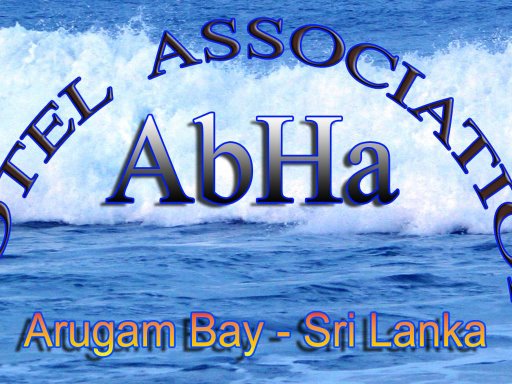

 Just then, in the midst of all the panic and chaos, I suddenly realised I was being stupid. Sure, the water was deep, but not that deep; I could see the ocean floor a couple of feet beneath me. Also, although the wave that had knocked me flat and churned me underwater had been huge, it had spent itself and was now not much more than a large swell making its way to shore. I stopped fighting the water and allowed myself to float to the surface, treading water and gratefully sucking in lungfulls of air. Man, this surfing business wasn’t as easy at it looked.
Just then, in the midst of all the panic and chaos, I suddenly realised I was being stupid. Sure, the water was deep, but not that deep; I could see the ocean floor a couple of feet beneath me. Also, although the wave that had knocked me flat and churned me underwater had been huge, it had spent itself and was now not much more than a large swell making its way to shore. I stopped fighting the water and allowed myself to float to the surface, treading water and gratefully sucking in lungfulls of air. Man, this surfing business wasn’t as easy at it looked. ‘Ok, you lie on board now’, she said when we had got close to where the waves started to break. ‘Lie in middle so board is frat, aazzawize front go down or back go up.’ I did as I was told and managed to lie flat on the board without stoppie-ing, wheelie-ing or rolling it over.
‘Ok, you lie on board now’, she said when we had got close to where the waves started to break. ‘Lie in middle so board is frat, aazzawize front go down or back go up.’ I did as I was told and managed to lie flat on the board without stoppie-ing, wheelie-ing or rolling it over. Then my beginner’s instinct kicked in and I looked straight down at my feet, at which point I plunged head first into the water. This time I let the wave pass over me and surfaced quickly, feeling completely overjoyed. Surf Girl was giggling away and offered congratulations. ‘Ha ha, now you saarfar. You practice more, you more better.’ I decided to
Then my beginner’s instinct kicked in and I looked straight down at my feet, at which point I plunged head first into the water. This time I let the wave pass over me and surfaced quickly, feeling completely overjoyed. Surf Girl was giggling away and offered congratulations. ‘Ha ha, now you saarfar. You practice more, you more better.’ I decided to The tsunami that hit Arugam Bay on the 24th of December, 2004 completely flattened what is little more than an overgrown fishing village that just happens to have some of the best surfing waves in the world. The structure on whose balcony I was now sitting was one of the few that survived the seven massive waves that swept inland, but the Danish owner of the hotel hadn’t been as fortunate. Almost 3,000 people died that day, which for a small village is a huge number. Even now, I could see reminders of the utter devastation. The main road running through the village was little more than a series of craters, and the surviving buildings on both sides looked like they had been at the receiving end of an air-raid. Buses and Toyota Hiace vans were scattered here and there, crumpled like so much tissue paper. New structures and houses had come up, made mainly of wood and tin, giving the place an air of a refugee camp more than anything else. Teams of flustered white people drove up and down in Landcruisers, aid workers who looked like they’d much rather be downing cold ones at the Colombo Hilton. Just after the tsunami, the village had apparently received
The tsunami that hit Arugam Bay on the 24th of December, 2004 completely flattened what is little more than an overgrown fishing village that just happens to have some of the best surfing waves in the world. The structure on whose balcony I was now sitting was one of the few that survived the seven massive waves that swept inland, but the Danish owner of the hotel hadn’t been as fortunate. Almost 3,000 people died that day, which for a small village is a huge number. Even now, I could see reminders of the utter devastation. The main road running through the village was little more than a series of craters, and the surviving buildings on both sides looked like they had been at the receiving end of an air-raid. Buses and Toyota Hiace vans were scattered here and there, crumpled like so much tissue paper. New structures and houses had come up, made mainly of wood and tin, giving the place an air of a refugee camp more than anything else. Teams of flustered white people drove up and down in Landcruisers, aid workers who looked like they’d much rather be downing cold ones at the Colombo Hilton. Just after the tsunami, the village had apparently received Apart from the physical scars, the village was almost back to normal now. Tourists were coming back, almost all the hotels and shacks appeared to have re-opened and the fishing boats were putting out to sea again. Even then, it seemed unlikely that it would ever develop into a full-fledged ‘tourist’ centre, which was just as well. I couldn’t think of anything worse than the place being overrun by hundreds of people and swank hotels. You see, ever since it was first
Apart from the physical scars, the village was almost back to normal now. Tourists were coming back, almost all the hotels and shacks appeared to have re-opened and the fishing boats were putting out to sea again. Even then, it seemed unlikely that it would ever develop into a full-fledged ‘tourist’ centre, which was just as well. I couldn’t think of anything worse than the place being overrun by hundreds of people and swank hotels. You see, ever since it was first TRAVEL LOG
TRAVEL LOG


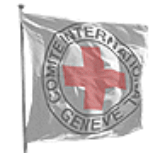
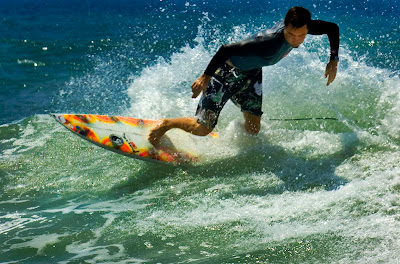
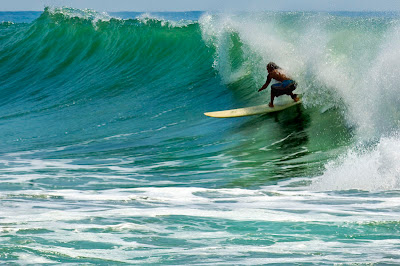
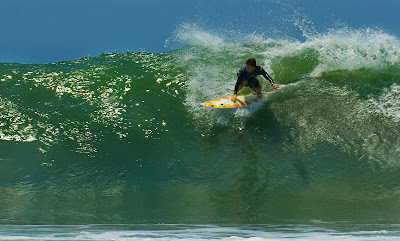
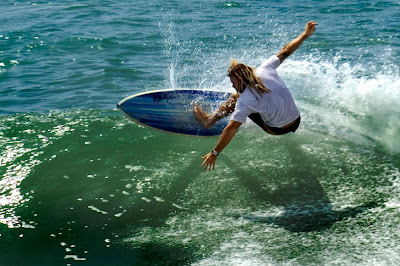
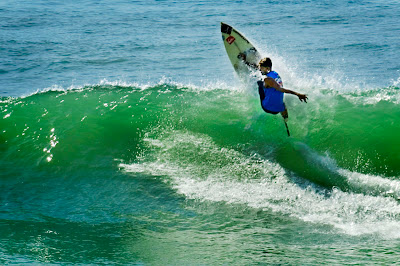
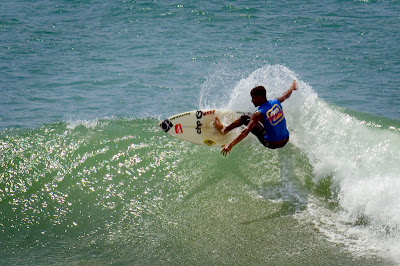

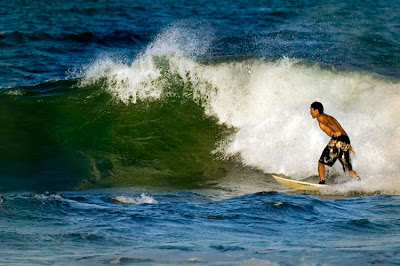
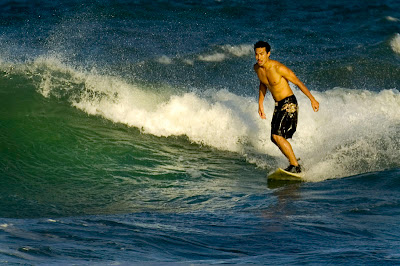
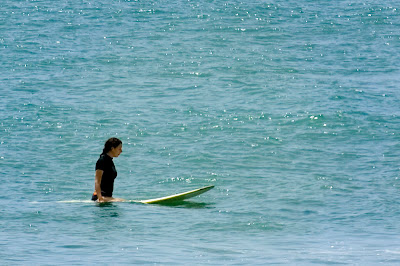
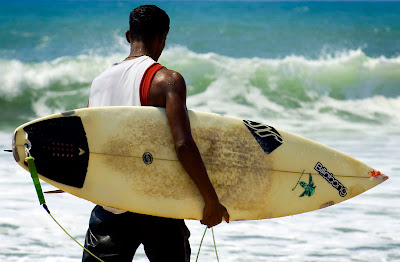



 Arugam Forum
Arugam Forum Arugam Photo Galleries on Picasa
Arugam Photo Galleries on Picasa Old Website
Old Website Press Coverage
Press Coverage Surf Forecast for Arugam Bay
Surf Forecast for Arugam Bay
TODAY’s Comments